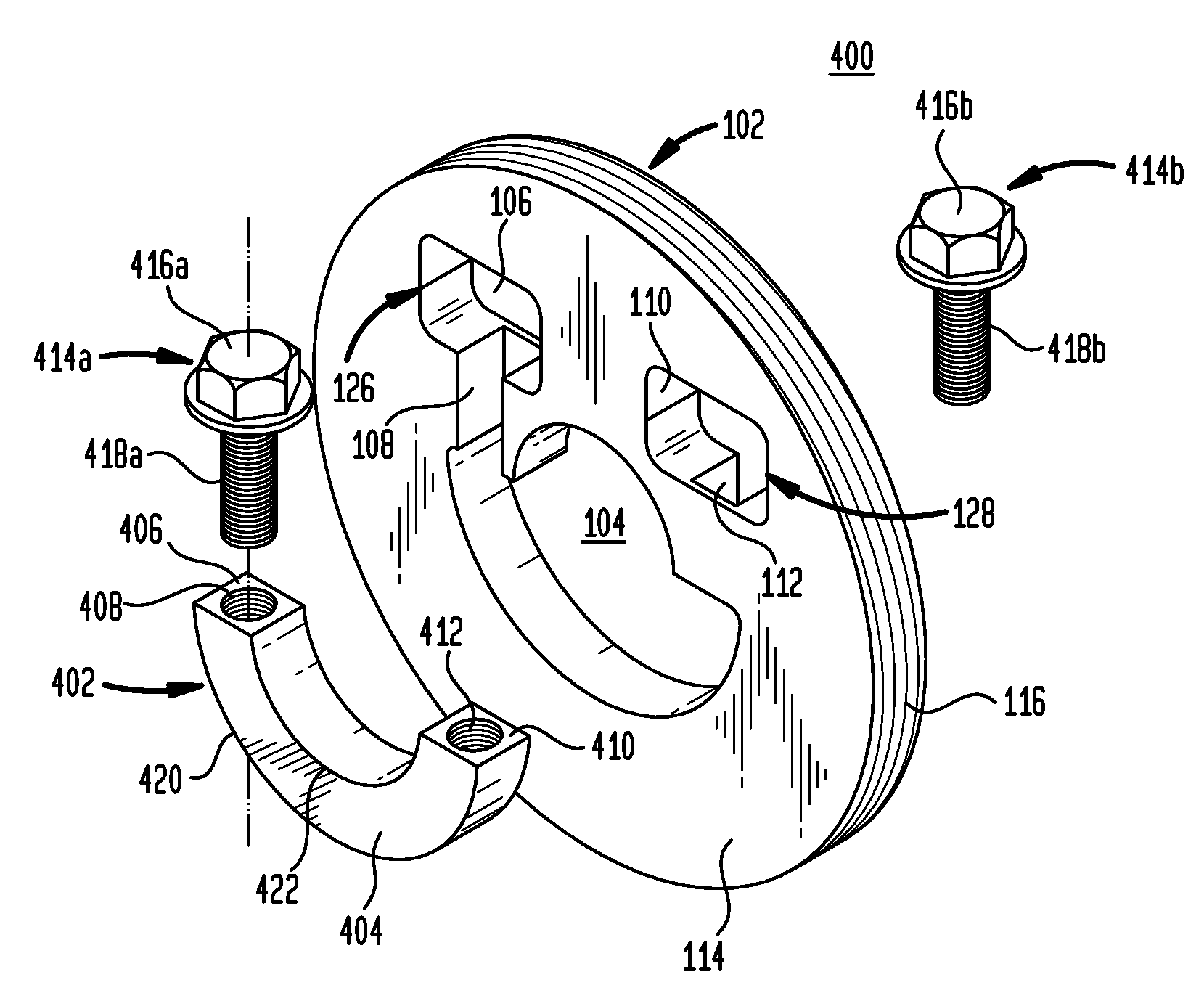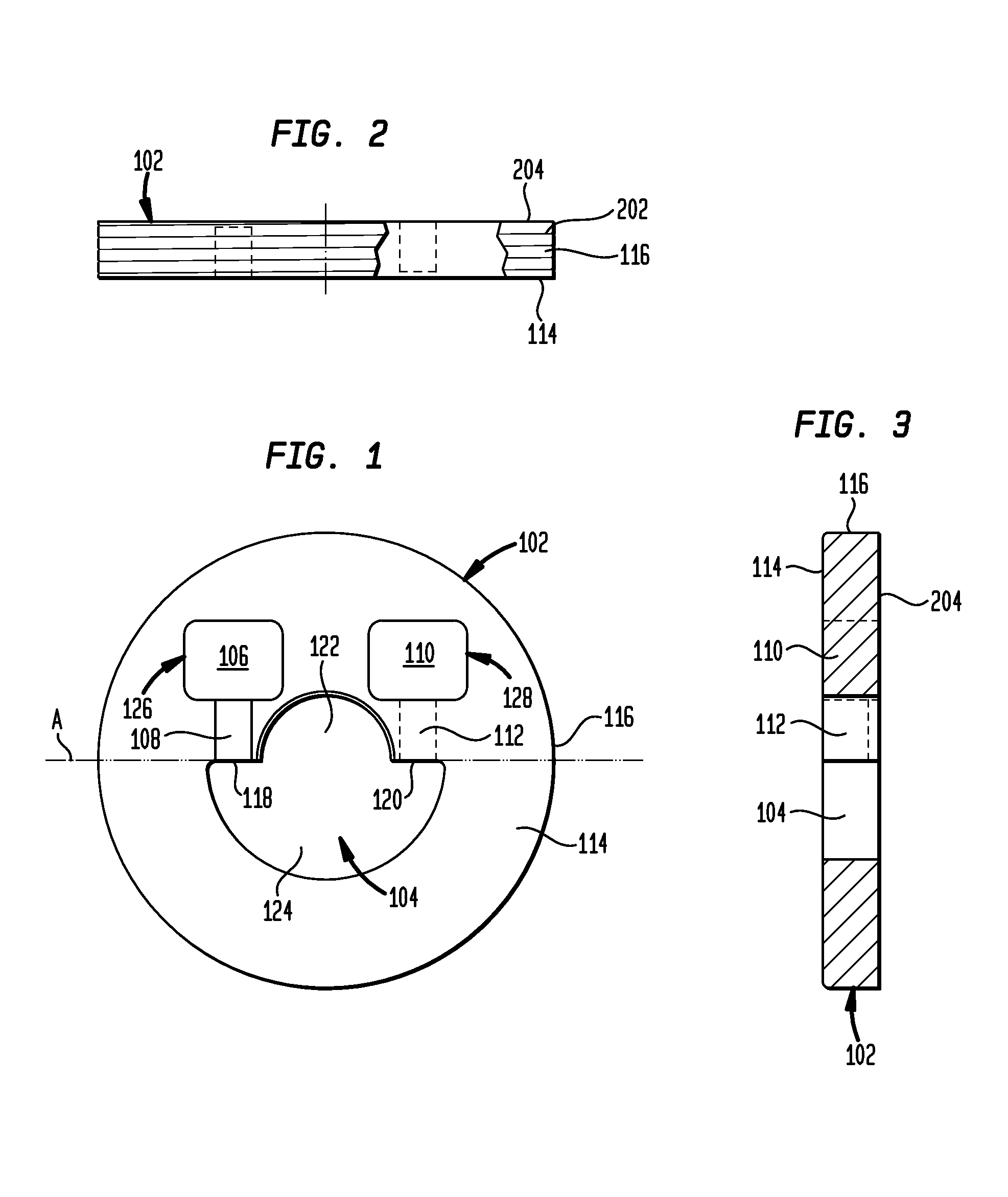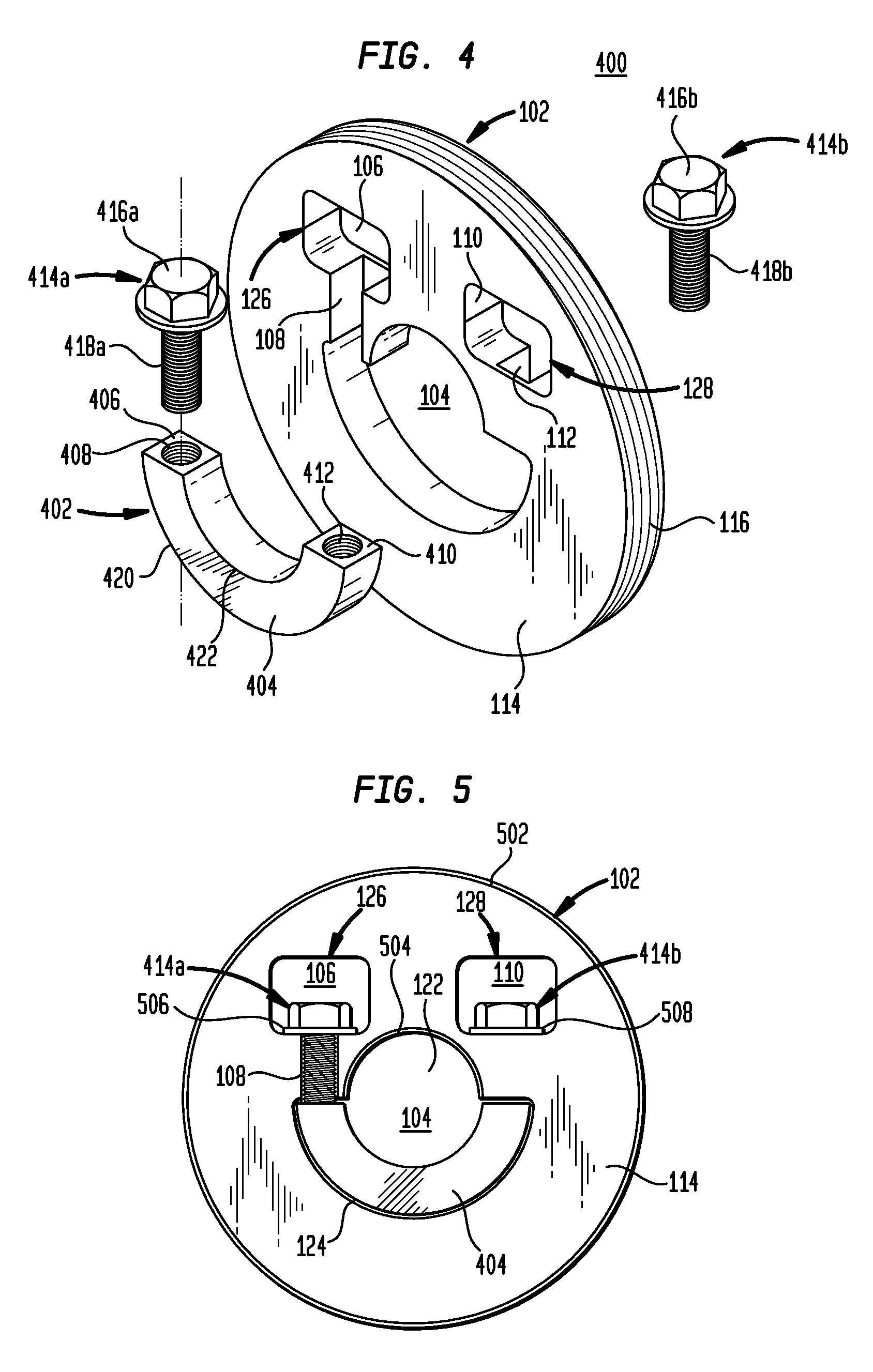System and method for securing a rotor to a motor drive shaft using a pressure clamp
a technology of pressure clamping and rotor, which is applied in the field of rotors, can solve the problems of inability to reliably achieve maximum clamping force with set screw tightening tools, inaccessible side edges of rotors, and inability to reposition, repair or replace rotors without, so as to reduce the risk of failure, less prone to improper installation, and narrow profile
- Summary
- Abstract
- Description
- Claims
- Application Information
AI Technical Summary
Benefits of technology
Problems solved by technology
Method used
Image
Examples
Embodiment Construction
[0022]The rotor assembly of the present invention is shown in the accompanying figures. FIGS. 1-3 show the preferred embodiment of a rotor 102 having a first face 114, a second face 204, an external edge 116, and a main aperture 104 centrally positioned in the rotor 102. The main aperture 104 passes through the entire thickness of the rotor 102 and has a first half 122 and a second half 124. For convenience purpose only, the rotor 102 is shown have a longitudinal axis A that passes through the center point of the rotor 102. Therefore, the first half 122 of the main aperture 104 is that portion of the main aperture 104 located above axis A whereas the second half 124 of the main aperture 104 is that portion of the main aperture 104 located below axis A. In the preferred embodiment, the first half 122 of the main aperture 104 is generally a half circle having a diameter of a first size that is about equal to the diameter of the target motor shaft. The second half 124 of the main apert...
PUM
| Property | Measurement | Unit |
|---|---|---|
| diameter | aaaaa | aaaaa |
| diameter | aaaaa | aaaaa |
| diameter | aaaaa | aaaaa |
Abstract
Description
Claims
Application Information
 Login to View More
Login to View More - R&D
- Intellectual Property
- Life Sciences
- Materials
- Tech Scout
- Unparalleled Data Quality
- Higher Quality Content
- 60% Fewer Hallucinations
Browse by: Latest US Patents, China's latest patents, Technical Efficacy Thesaurus, Application Domain, Technology Topic, Popular Technical Reports.
© 2025 PatSnap. All rights reserved.Legal|Privacy policy|Modern Slavery Act Transparency Statement|Sitemap|About US| Contact US: help@patsnap.com



